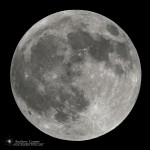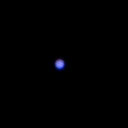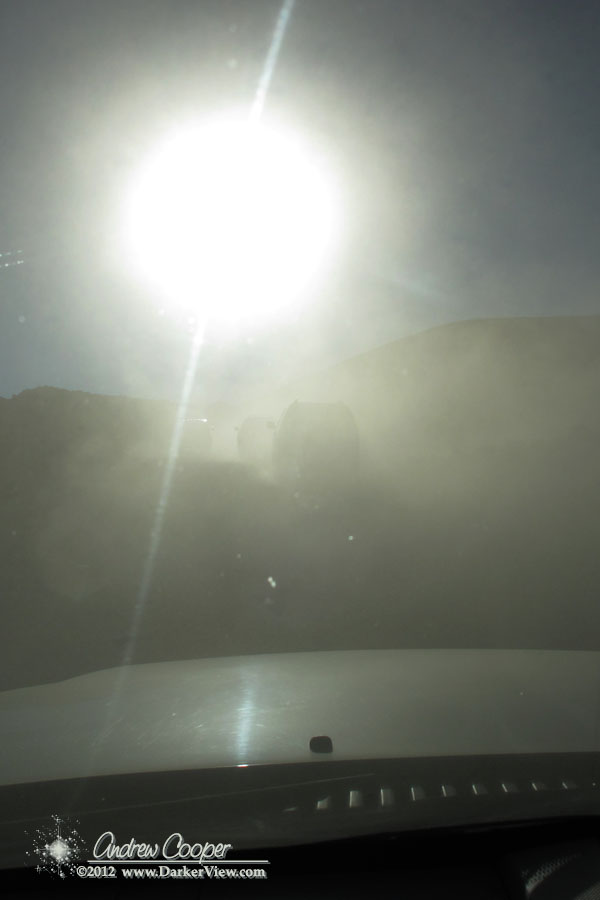
Uranus at Opposition

Comet C/2012 S1 ISON
A new comet discovered earlier this week has caught the attention of the astronomy community. Comet C/2012 S1 (ISON) was discovered Tuesday by a telescope affiliated with ISON, the International Scientific Optical Observation Network. This is a network of mid-sized telescopes dedicated to surveillance of the near earth region of our solar system.
The reason this comet is intriguing is a combination of a large estimated size and an orbit that appears to provide both a close approach to the Sun and favorable viewing from the Earth.
The comet will approach the sun as close as 0.012 AU on November 28th, 2013, quite close indeed. The comet will also approach Earth as close as 0.4 AU (60 million kilometers or 37 million miles) on December 26th, 2013. As a result this comet could achieve a magnitude well into the negative numbers, brighter than most objects in the sky except the Sun or Moon.
This comet is in addition to comet C/2011 L4 (PanSTARRS), expected to be an unaided eye comet during the spring of 2013. If we get lucky 2013 will be a great year for comets.
As I have cautioned in the past, comet predictions are to be taken with a good amount of skepticism. This could be a spectacular comet, or this could be a mediocre comet, we will just have to wait and see. In the meantime pay attention to the light curve as it nears the Sun. As my friend David Levy observed… “Comets are like cats; they have tails, and they do precisely what they want.”
Bananas
A Line of Planets in the Sunset
As Mercury rises clear of the Sun’s glare it joins Mars and Saturn in the sunset sky. Tonight the three will form a nice line of planets. Mercury will still be quite low, about 12° from the Sun at sunset. Saturn is next in the line at 19° elevation at sunset. Mars will be over 30° high at sunset. As usual Mars and Saturn are about the same brightness, Mars at 1.2 magnitude, Saturn at 0.72. Mercury will be the brightest at -0.6 magnitude, which will aid in seeing the planets lower in the sunset.
The three will dance in the sunset over the coming weeks with Saturn and Mercury joining up for a close set around October 4th.
Dusty Road
Rush hour for Mauna Kea is just before sunset. This is when the day crews are coming down, while the summit tours and telescope operators are heading up.
The timing of this rush can be variable depending on time of year and what time sunset occurs. Twice a year this rush is at its worst, when everyone heads up and down at the same time. This can lead to some difficult driving conditions… A lot of vehicles on a road that can be challenging. A cloud of fine cinder dust and a setting Sun just adding to the confusion…

Back from Alaska

You want to hear about the trip? All the fun details? You will have to head over to NordicQuest.com! The hours and days of cruising provide ample opportunity to pull out the iPad and write. There are descriptions of the fishing, the adventures and useful notes on each harbor and anchorage we used for the trip.
I shot 1,843 photographs during the voyage, about 43Gb of photos. This does not count the thousands of timelapse photos and dozens of video clips. The best of these photos are now posted as photos of the week, scheduled from this week through next summer.
In the meantime I have neglected Darker View. Time to return to the islands in both body and imagination. I have more explorations planned for the fall, time to put those plans into motion.
Fall Equinox
Fall equinox occurs today at 04:49HST. Today there will be little difference between the length of the night compared to number of daylight hours. This is the first day of fall as marked by many cultures in the northern hemisphere.
2012 Solstices and Equinoxes
| UT | HST | |||
| Perihelion | Jan 5 | 03:59UT | Jan 4 | 17:59HST |
| Spring Equinox | Mar 20 | 05:14UT | Mar 19 | 19:14HST |
| Summer Solstice | Jun 20 | 23:09UT | Jun 20 | 13:09HST |
| Apehelion | Jul 4 | 23:59UT | Jul 4 | 13:59HST |
| Fall Equinox | Sep 22 | 14:49UT | Sep 22 | 04:49HST |
| Winter Solstice | Dec 21 | 11:12UT | Dec 21 | 01:12HST |
| Source: USNO Data Services Website and the NASA Sky Calendar | ||||
Mercury in the Sunset
Mercury is beginning its third and final evening apparition of the year. Today the planet will be over 10° from the Sun, rising a little further each day until maximum elongation on October 26th. The planet will pass Saturn around October 4th and have a very close conjunction with the Moon on October 16th.
Flying to the Islands
With a few flights back and forth to the mainland this month a few obsrvations have come to mind. One… I relly prefer to fly Alaskan Airlines to and from Hawaii.
A few reasons for this… There seems to be just a bit more room in the seats, my knees do not jam into the seat infront of me. The snacks are notably better, even if you have to pay a few bucks for them. The 737’s Alaska flys have bigger overhead bins and with fewer passengers on the smaller aircraft, they load and debark a lot faster.
The overall experience of flying on Alaska just comes off better. The prices are about the same. Allt things considered Alaska will be my choice flying to and from the islands, if I have a choice.

